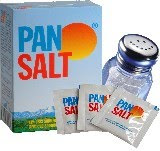With Christmas virtually here , there’s no saying no to food once the season’s parties come rolling in. And holiday foods being what they are—rich, richer, and richest—the yearly binge could give rise to a number of health problems like hyperacidity, or exacerbate certain conditions like hypertension.
While it is admittedly hard to monitor one’s salt intake—which, according to medical experts should not exceed 5 g a day—it would be wise to be aware of where salt lies hidden in our everyday food. Knowing these tips would also help revelers steer their way to safer choices at the holiday buffet.
According to the Food and Nutrition Research Institute (FNRI) of the Department of Science and Technology (DOST) many Filipinos eat more salt and sodium than required. Moreover, the Filipino diet already contains about 2000mg of salt inherent in foods (particularly animal foods). “With the addition of soy sauce, fish sauce, MSG, and other salty condiments during cooking, or seasonings at the table; or the excessive intake of salty fish and highly salted fermented fish or sauces (bagoong), the sodium intake increases drastically to about 6000 mg (about 15g of salt),” said the FNRI.
Following are quick tips on how to limit sodium (the main ingredient of salt) intake:
- Eat natural foods with little or no added salt.
- Use herbs and spices to naturally flavor or season food instead of table salt, monosodium glutamate or highly salty condiments.
- Limit intake of preserved and processed foods, cheese, canned soups, canned fruits and vegetables, instant noodles, and canned meats.
- Limit use of soup cubes.
- Limit intake of salty, canned, and preserved meats and fish (ham, bacon, tinapa, dilis, daing).
- Limit addition of condiments (soy sauce, bagoong, patis and ketchup).
- Limit intake of salted snacks.
- Read labels to find out the sodium content of packed or preserved foods.
The lists issued by western health experts even include keeping fast foods, sausages, potato crisps and chips, sauces and pickles, peanut butter, prepared mixes and prepackaged frozen dinners at a minimum.
Medical experts and evidence-based science have shown that too much sodium is harmful to humans as it increases the risk of developing high blood pressure and its complications, such as strokes, heart attacks, kidney damage, and possibly asthma and some cancers.
So is there anything left to eat? There’s a good chance there is, with PANSALT®, the healthier salt for Filipino health buffs and those on special dietary regimens. PANSALT® contains Iodine, cuts sodium chloride to 56-57 percent, and is rich in the essential minerals Magnesium and Potassium, which are not present in common salt.
PANSALT®’s unique and patented formula is the product of years of research and study by health experts from Finland
Because it has found great consumer acceptance—it has the best taste profile among low-sodium salts in the market, without any bitter aftertaste— PANSALT® is already being used in more than a thousand food products from hundreds of manufacturers across the world. PANSALT® now flavors prepared meat products and processed food; prepared fish, dairy, hamburger, and bakery products; snack food; seasonings; and flour mixtures.
Imported by Accord International, Inc., PANSALT® is now available nationwide.

No comments:
Post a Comment